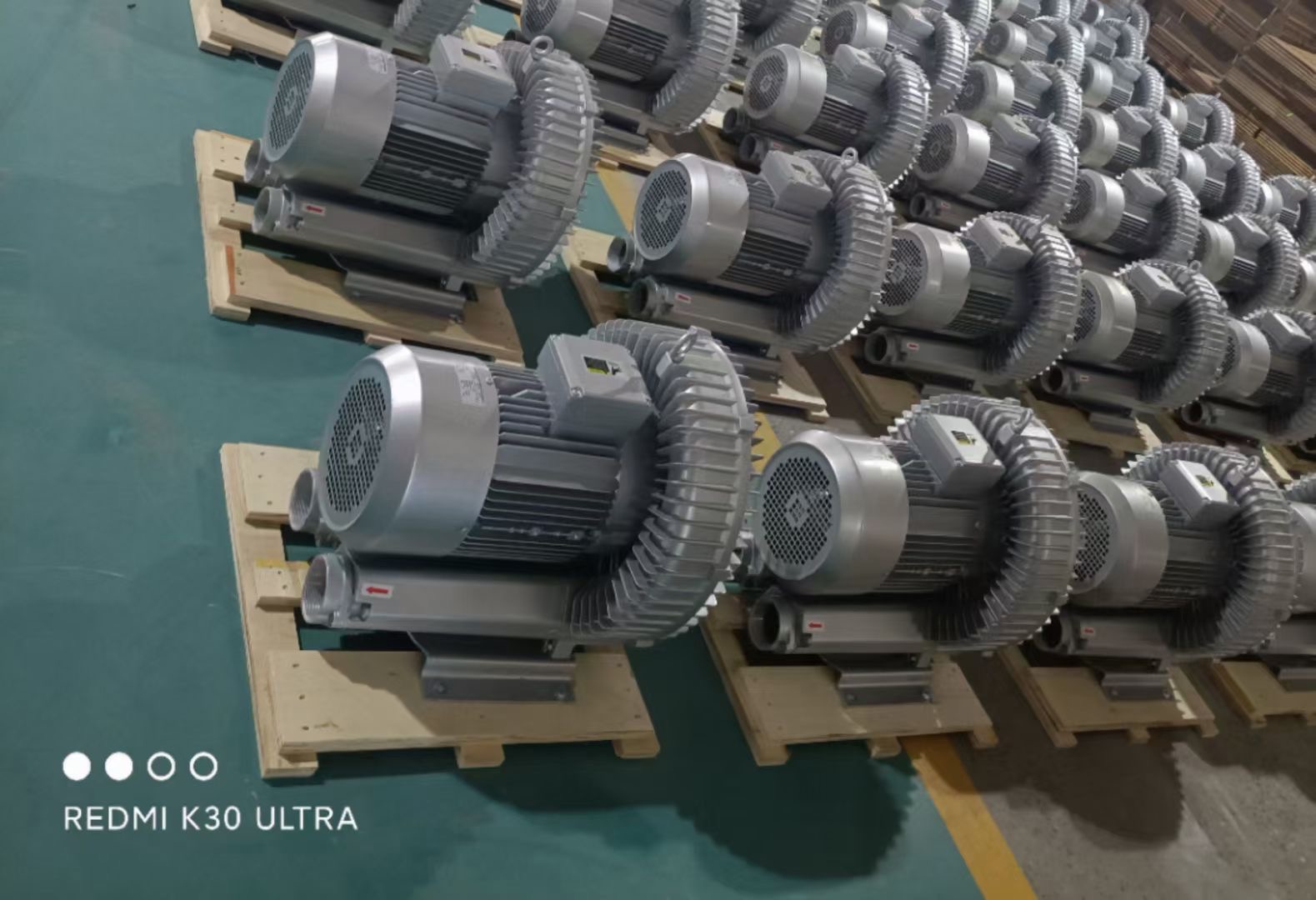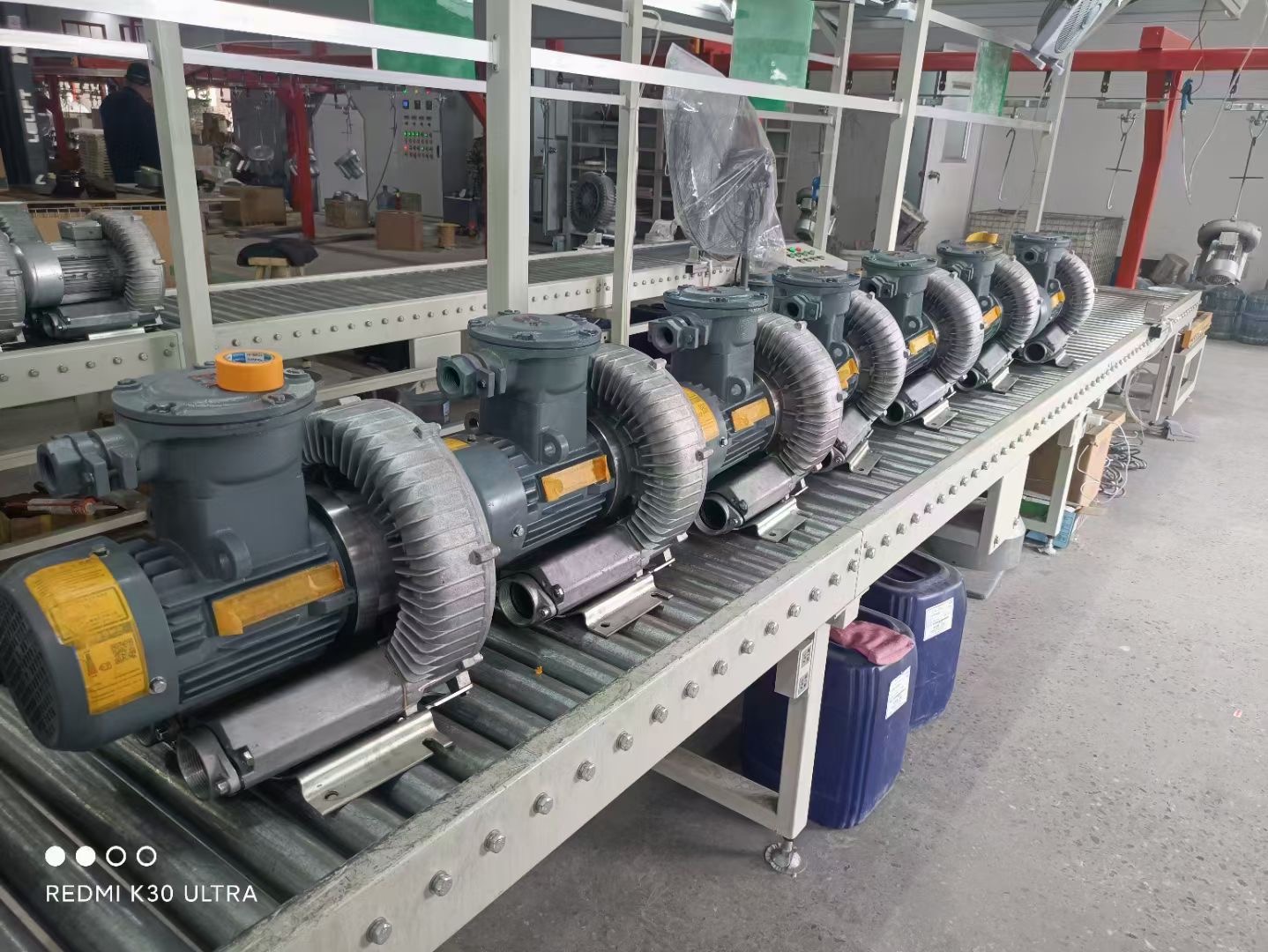Aquaculture fan / high-pressure fan / high-pressure blower is one of the high-yield and high-efficiency mechanical equipment for aquaculture.
Rational use of aerator can not only prevent and reduce floating head, but also improve water quality, strengthen pond water circulation and promote plankton reproduction.
Characteristics of High pressure Fan in Aquaculture.
1. Safe, oil-free, waterless compression.
2. IP54 protection grade and F class insulated motor.
3. Adopt dual-frequency (50/60HZ) and wide voltage motor to meet the voltage level.
4. External bearing design to improve the reliability and service life of the fan.
5. Optional variable frequency drive, which can improve the driving performance of ordinary motor by 300% compared with that of ordinary motor.
6. The unique sealing form between the impeller and the pump body to reduce the pressure loss of high pressure gas.
Eight advantages of aeration in aquaculture with air blowers .

First, thoroughly improve the anoxia at the bottom of the water.
Anoxia in the bottom layer is one of the main reasons for the failure of FU in the bottom layer, which leads to the failure of water quality FU, the limitation of production capacity and the illness of aquaculture products. After aeration and oxygenation in the bottom layer, the total oxygen content of the whole water body increases greatly, and the dissolved oxygen content of the surface layer tends to be consistent with the continuous replacement of the surface oxygen-rich water and the bottom oxygen-poor water, which can greatly improve the hypoxia condition of the bottom layer.
Through a large number of tests, it is proved that in the natural aquaculture water body, the dissolved oxygen content of the water body using the bottom oxygen enrichment system is more than 40% higher than that of other oxygen-increasing machines.
Second, reduce the harmful substances in the water body.
In the process of culture, a large number of harmful substances such as ammonia nitrogen, nitrite, hydrogen sulfide, Escherichia coli and Vibrio are produced in the water body. After using the bottom oxygen, these harmful substances are greatly reduced due to the tumbling of the water body and sufficient oxygen at the bottom, especially for nitrite and Escherichia coli. Practice has proved that the use of bottom oxygen enrichment system can completely relieve the worries of nitrite harm.
Third, improve the bottom quality of the pond.

The sediment of the pond is very important to the culture, and the deposition of the sediment has become a headache and difficult to solve in the process of culture. Under the action of the bottom oxygen enrichment system, effectively decompose and oxidize the deposited residual bait, excreta, molting, silt and FU to improve the sediment, activate and guide the ecological function of the sediment.
Fourth, increase the natural bait and save the delivery of bait.
Under the action of the bottom aeration system, it can promote the reproduction and growth of plankton of beneficial algae in water and increase the number of natural bait.
In the case of the same yield, bait can be saved by more than 15%.
Fifth, reduce the delivery of drugs and realize pollution-free aquaculture.
In the process of culture, in order to regulate water quality, prevent fish and shrimp from getting sick, and reduce the risk of culture, it is necessary to invest a large amount of drugs, which not only causes water pollution, but also leaves hidden dangers for food safety. After using the bottom oxygen enrichment system, due to the improvement of water quality and bottom quality, oxygen is sufficient and the water body is healthy and stable, so the use of drugs can be avoided or reduced.
VI. Break the underwater stratification.
The use of the bottom microporous aeration system can make the water body form upper and lower convection, so as to eliminate the dissolved oxygen, temperature, salinity and algae stratification in the water body, and reduce the interference of air temperature, air pressure, Rain Water and so on to the stability of pond water quality. so as to reduce the stress reaction of fish and shrimp, which is beneficial to promote growth; at the same time, it can reduce water exchange and save the cost of water intake and drainage.
VII. enhance the physique and disease resistance of farmed varieties.
Due to the health of the water body and the obvious improvement of the physique and disease resistance of the farmed species, it has been proved that the ponds using the bottom micropore aeration aeration system can effectively delay and shorten the time and degree of disease when all the surrounding ponds are sick and dead. there are also a considerable number of ponds that hinder the occurrence of diseases until the culture is successful.
VIII. Environmental protection and energy conservation.
The use of underwater microporous aeration system to reduce pollution *, greatly reduce the drug consumption of aquaculture water, and the pollution of aquaculture water and sediment can greatly reduce the discharge of secondary pollution to rivers, lakes and oceans.
The use of underwater microporous aeration system can greatly increase the breeding density and the power is very small, saving electricity by 60% and increasing production by 15-30% compared with the traditional way of increasing oxygen, so as to achieve the purpose of energy saving.
The specific configuration depends on the culture density on the surface of the water.
The problem of anoxia in fish ponds and shrimp ponds can be solved from the root. Maintaining good water quality will greatly reduce the risk of disease of aquatic products and reduce the addition of drugs or not.
How to better protect the water quality, breeding a large number of aquatic products is bound to cause changes in water quality.
We draw lessons from some foreign xian technology to treat the culture water with non-residual and pollution-free ozone, and add ozone to the circulating culture water to purify the culture water.
Ozone has strong oxidation, can oxidize and decompose feces in water, ammonia nitrogen, sterilization, decomposition of macromolecular plankton and other functions, so that high-density aquatic products survive in a sterile state.
The aquaculture water treated with ozone can not only prevent the occurrence of fish disease, but also the ozone is extremely unstable, which will automatically decompose into oxygen after a period of time to increase the oxygen content in the water, which is more conducive to the survival of aquatic products.

